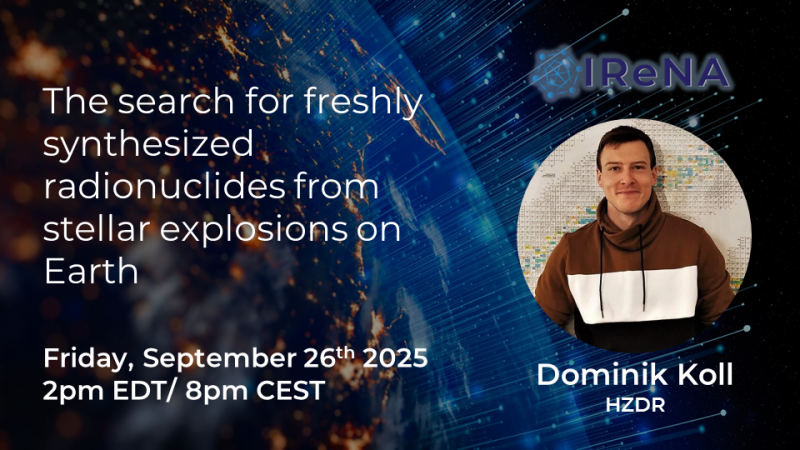Data
The search for freshly synthesized radionuclides from stellar explosions on Earth featuring Dominik Koll (HZDR, Germany)

Hosted by: Steffen Turkat (TU Dresden, Germany)
Abstract: Stars are the element factories of the universe. Stellar explosions distribute freshly synthesized radionuclides in the interstellar medium and lead to the chemical enrichment of galaxies. These cataclysmic events moreover shape the interstellar medium and form large scale structures in the universe.
Live radionuclides ejected by these explosions are the fingerprints of stellar nucleosynthesis. The direct detection of them on Earth and the Moon helps to constrain nucleosynthesis models as well as interstellar medium dynamics near the solar system.
In this presentation, I will give an overview of successful interstellar radionuclide detections on Earth and the Moon using the single atom-counting technique Accelerator Mass Spectrometry (AMS).
The investigated radionuclides, 60Fe from core-collapse supernovae as well as 244Pu and 247Cm from the r-process shed light on million year old supernova activity near Earth, recent deposition of stardust on Earth from the Complex of Local Interstellar Clouds (CLIC) and constrain the timing and source of the last r-process event in the Milky Way. Future measurement campaigns for additional radionuclides such as 26Al, 53Mn or 182Hf are foreseen.
Group Webpage: www.hzdr.de/ams
